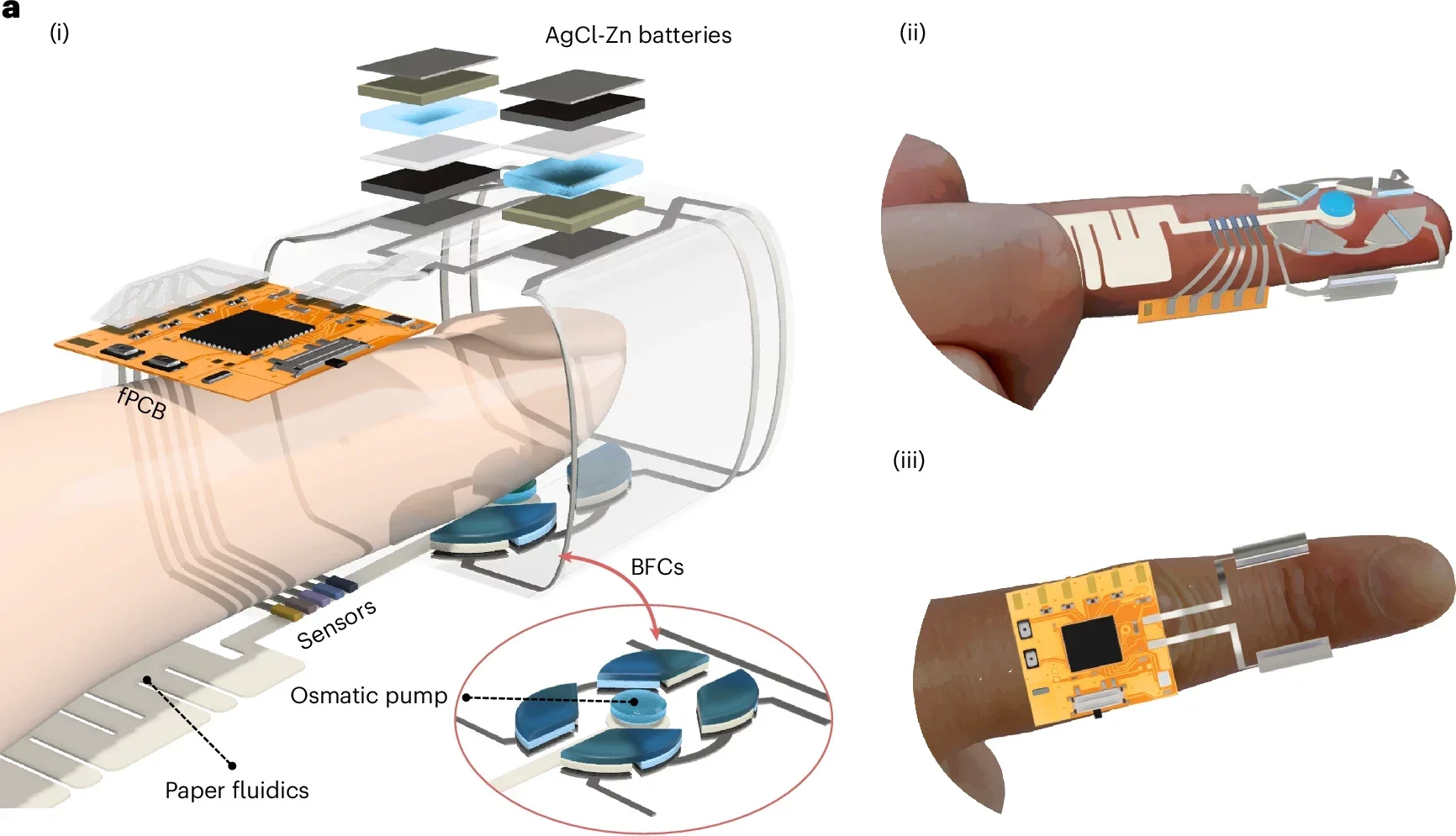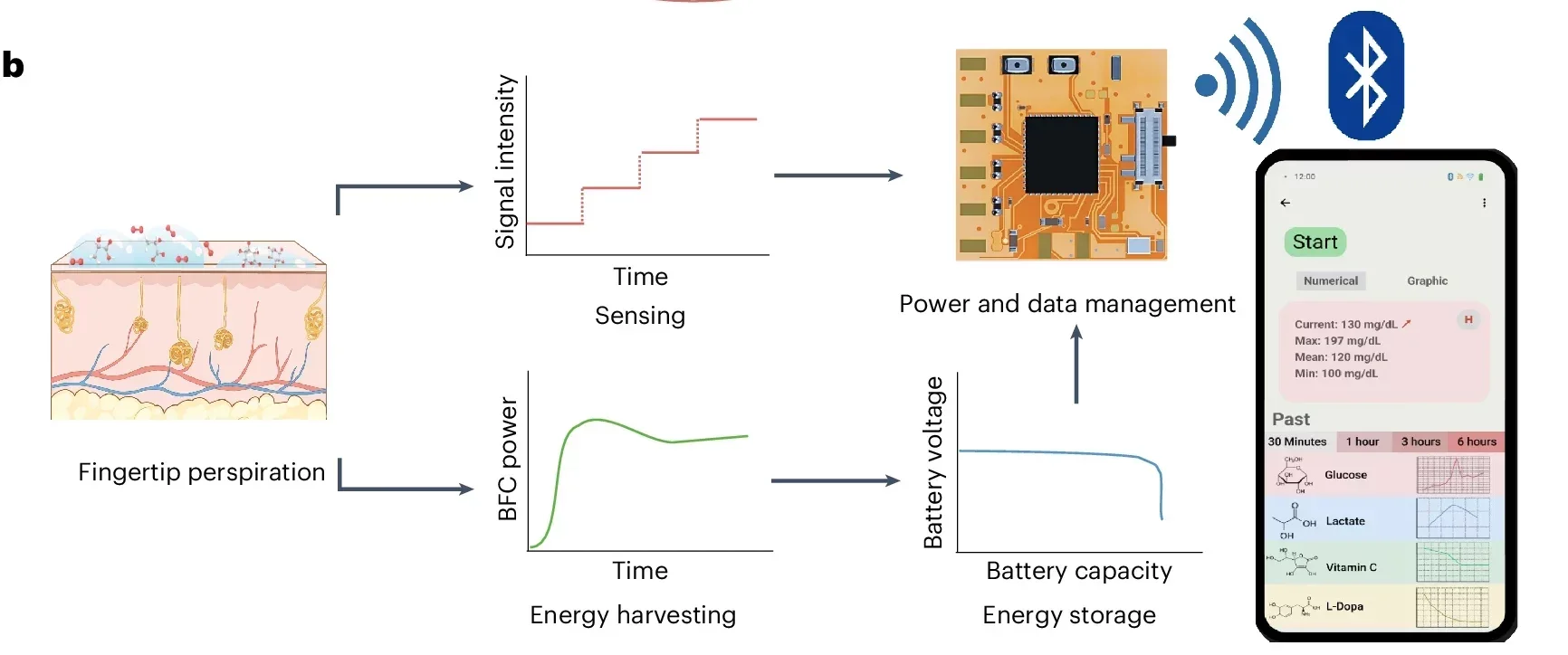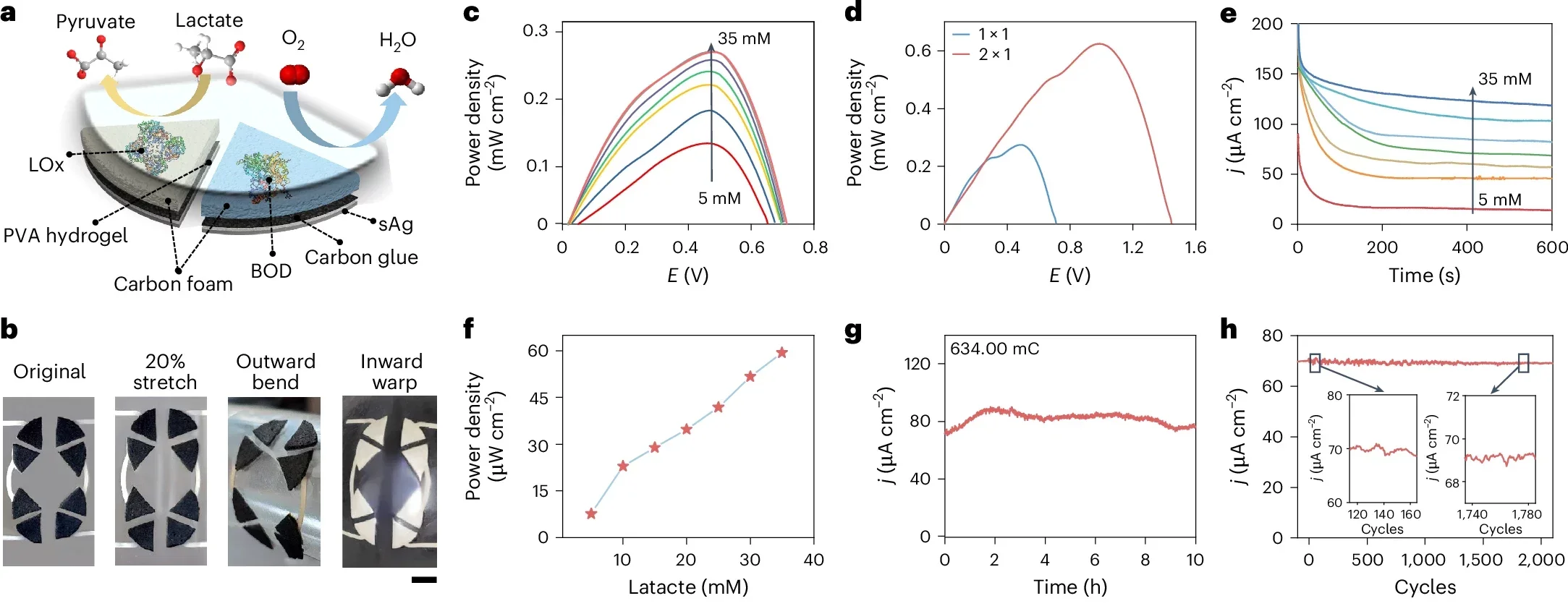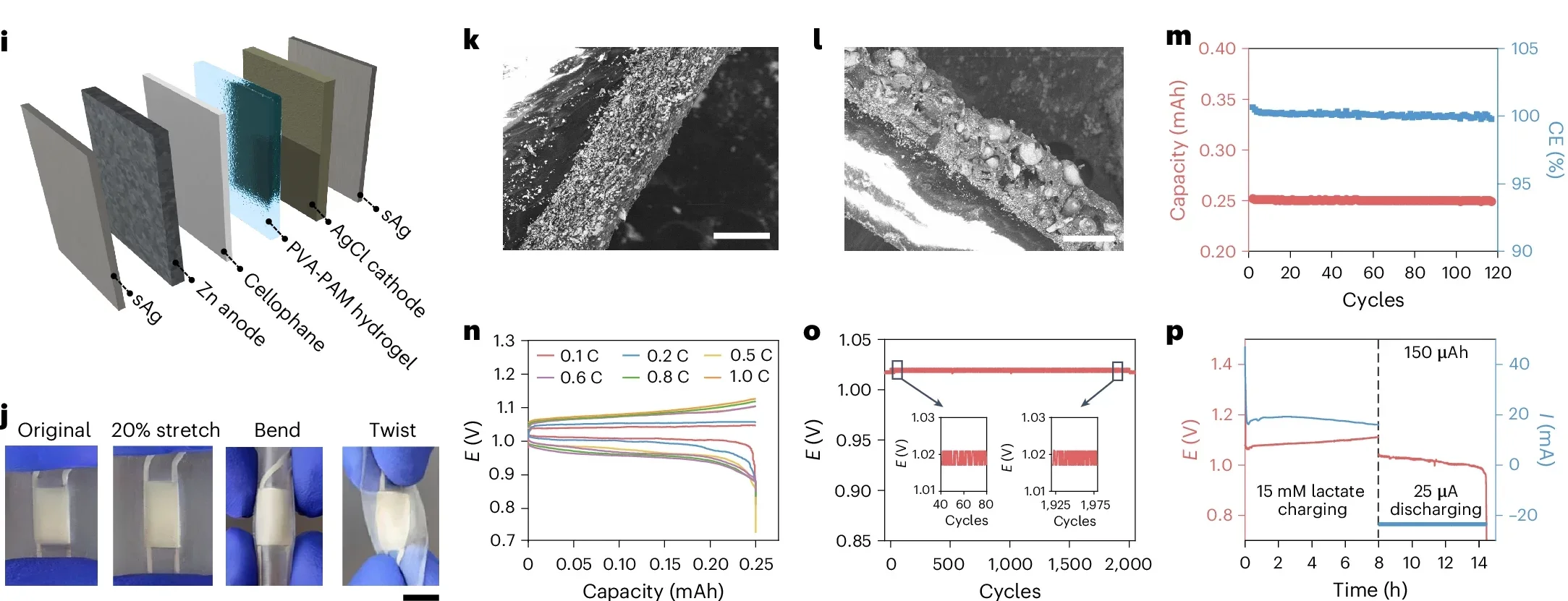Health monitoring is poised for a major transformation with the advent of sweat-powered wearable devices. Researchers have developed a fingertip-worn gadget capable of continuously tracking vital chemical levels in the body.
This innovation, driven by advanced microgrid technology, promises to make personalized health monitoring as effortless as putting on a Band-Aid. By harvesting energy directly from sweat, this device offers an entirely new approach to wearable technology, eliminating the need for batteries or external power sources.
Engineers at the University of California, San Diego, led by Professor Joseph Wang, unveiled this breakthrough in a recent publication in Nature Electronics. The device not only monitors biomarker levels like glucose, vitamin C, lactate, and levodopa, but also draws the energy it needs from the very sweat it analyzes.
Fingertips, with their high concentration of sweat glands, provide a reliable and sustainable power source. This innovation sets the stage for a future where wearable health monitoring systems are energy-autonomous, efficient, and user-friendly.

Despite significant advancements in wearable health devices, their widespread adoption has been hindered by several challenges. Traditional systems rely on batteries or external energy sources, which add bulk, limit functionality, and often compromise safety.
Rechargeable batteries require regular maintenance, while non-rechargeable options pose disposal and environmental concerns. Wireless power solutions, though innovative, restrict user mobility and increase device complexity.
Energy harvesters such as solar panels or motion-based systems offer potential alternatives but introduce their own set of challenges. These systems depend on external factors like light, temperature, or physical activity, which can be inconsistent or unavailable. Additionally, energy conversion circuits required for such systems often lead to energy losses, reducing efficiency and reliability.
Another significant challenge lies in integrating energy harvesting with other components like sensors and electronics. Wearable health monitors need to be compact, lightweight, and comfortable, but the inclusion of energy storage, sensing systems, and signal processing circuits increases the device footprint. Balancing these competing demands has been a persistent hurdle for researchers in the field.
Related Stories
A team at UC San Diego has addressed these challenges with a revolutionary microgrid system integrated into a fingertip-worn device. The system combines energy harvesting, storage, and biomarker sensing into a compact, stretchable device that wraps around the finger.
By leveraging enzymatic biofuel cells and silver chloride-zinc (AgCl-Zn) batteries, the device generates and stores power directly from sweat, ensuring continuous operation without external energy input.
Professor Wang described the significance of this design, stating, “It is based on a remarkable integration of energy harvesting and storage components, with multiple biosensors in a fluidic microchannel, along with the corresponding electronic controller, all at the fingertip.”
Fingertips are an ideal site for such a device. Despite their small size, they are densely packed with sweat glands that produce up to 1,000 times more sweat than most other parts of the body. This steady trickle of perspiration, even during rest or sleep, ensures a consistent energy supply.

The biofuel cells in the device efficiently convert chemicals in sweat into electricity, which is then stored in stretchable batteries to power the sensors and electronics.
The fingertip device exemplifies how wearable technology can integrate seamlessly into daily life. Its flexible polymer construction allows it to conform to the finger while maintaining durability through repeated bending and movement.
The device’s biofuel cells are strategically positioned to collect sweat, which is wicked through microfluidic channels to the sensors. These sensors analyze biomarkers like glucose, lactate, vitamin C, and levodopa, providing real-time health data.
The collected data is processed by a microcontroller and wirelessly transmitted to a smartphone or computer using Bluetooth. This enables users or healthcare providers to monitor health metrics continuously without needing invasive procedures or frequent testing.

“This is automatic health monitoring at your fingertips,” said Shichao Ding, a postdoctoral researcher and co-first author of the study. “The wearer can be resting or asleep, and the device can still harvest energy and track biomarker levels.”
The team tested the device under various conditions, demonstrating its versatility. It successfully monitored glucose levels during meals, lactate levels during exercise and rest, vitamin C levels after drinking orange juice, and levodopa levels after consuming fava beans. These results showcase the device’s ability to adapt to individual health needs and different daily activities.
One of the most exciting aspects of this technology is its potential for customization. The sensors can be tailored to detect specific biomarkers relevant to individual health conditions. For instance, the device could monitor hormone levels for stress management, detect markers of inflammation for chronic disease monitoring, or track drug levels for personalized medication management.
The research team is also working on integrating treatment capabilities into the device. By combining biomarker monitoring with drug delivery systems, the device could create a closed-loop system for autonomous healthcare. For example, in diabetes management, the device could continuously monitor glucose levels, automatically administer insulin when needed, and assess the effectiveness of the treatment in real-time.

“Autonomous power, sensing, and treatment all in one device—that’s the ultimate goal,” Ding said. This vision aligns with the growing demand for wearable technologies that not only collect data but also act on it to improve health outcomes.
The fingertip-worn device marks a significant leap forward in wearable health monitoring. By addressing the limitations of existing systems, it opens the door to a new generation of devices that are energy-autonomous, efficient, and practical for everyday use. Its ability to operate continuously without requiring user intervention makes it a valuable tool for preventive healthcare, chronic disease management, and fitness monitoring.
Beyond individual health, this technology could also have broader applications. In clinical settings, wearable devices could provide real-time data for patient monitoring, reducing the need for invasive tests and enabling earlier intervention. In research, they could facilitate large-scale studies by collecting continuous data from participants in their natural environments.
As the technology advances, it could become more affordable and accessible, bringing its benefits to a wider population. The integration of customizable sensors and treatment systems could revolutionize healthcare, making it more personalized, proactive, and effective.

This sweat-powered wearable demonstrates how innovative engineering can solve complex challenges and create solutions that improve quality of life. By harnessing the power of sweat, researchers have developed a device that is not only practical but also transformative, setting the stage for a future where health monitoring is as simple as wearing a Band-Aid.
Note: Materials provided above by The Brighter Side of News. Content may be edited for style and length.
Like these kind of feel good stories? Get The Brighter Side of News’ newsletter.
The post Innovative finger wrap uses sweat to provide health monitoring appeared first on The Brighter Side of News.